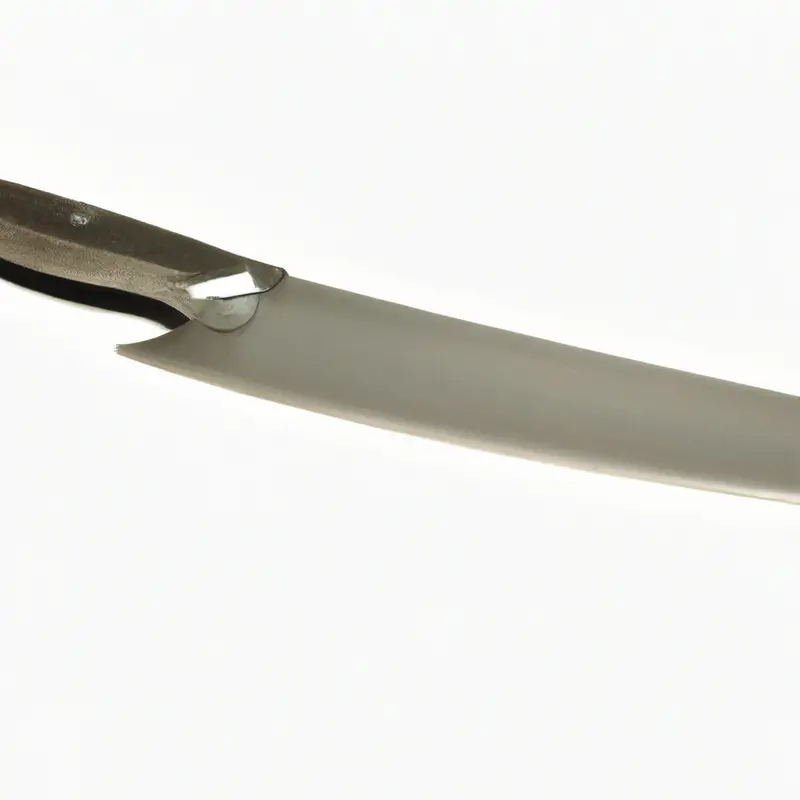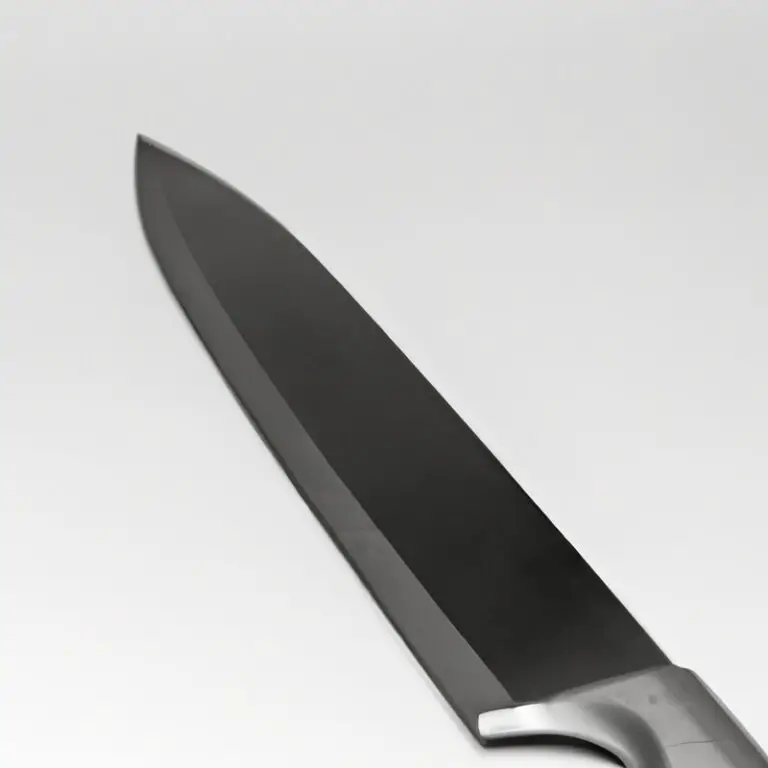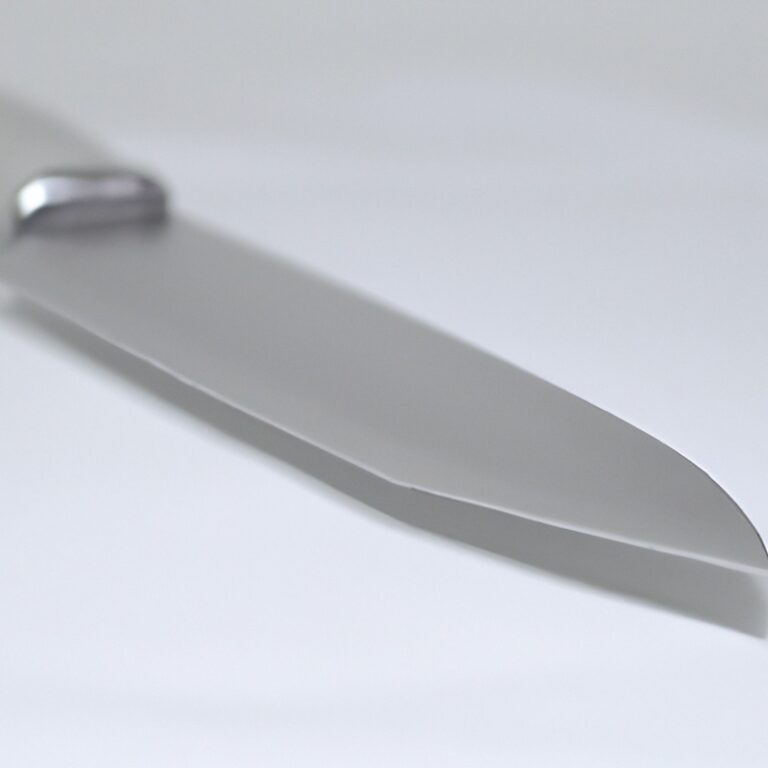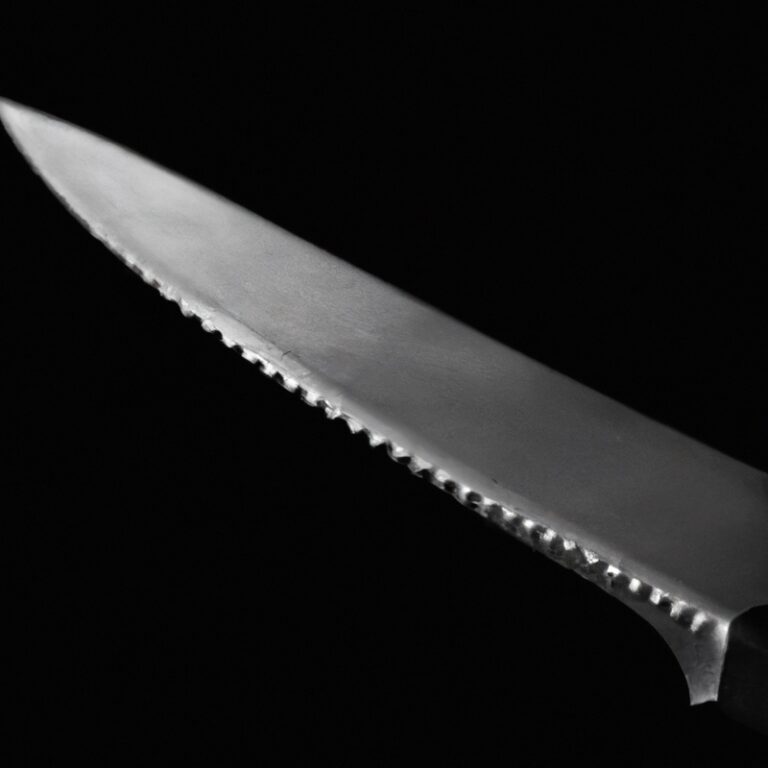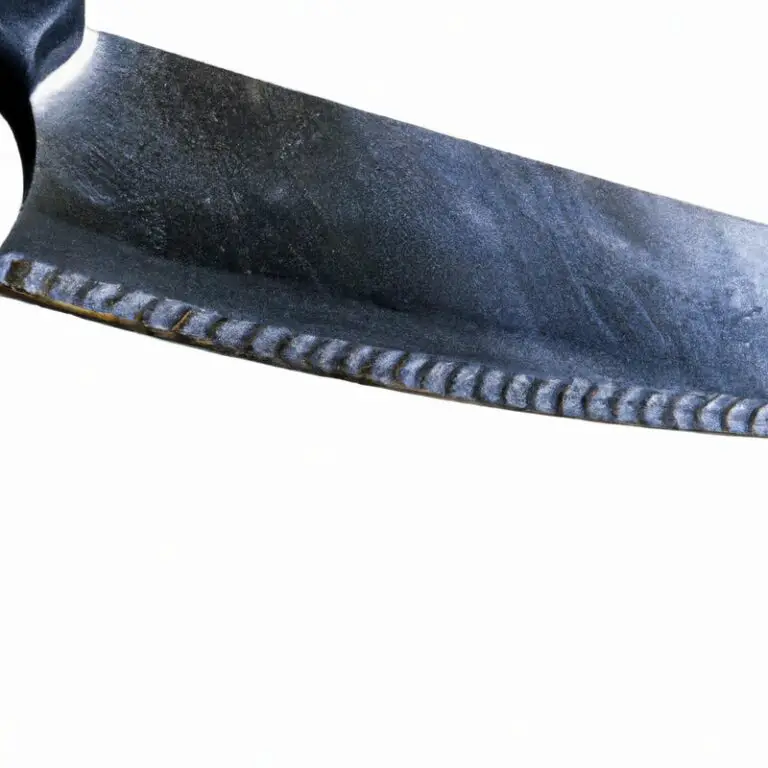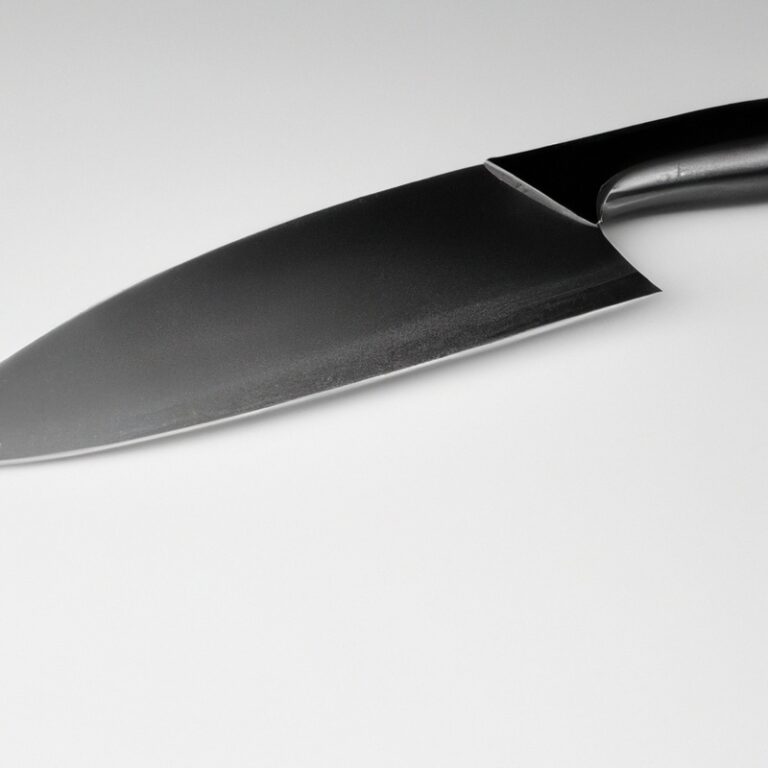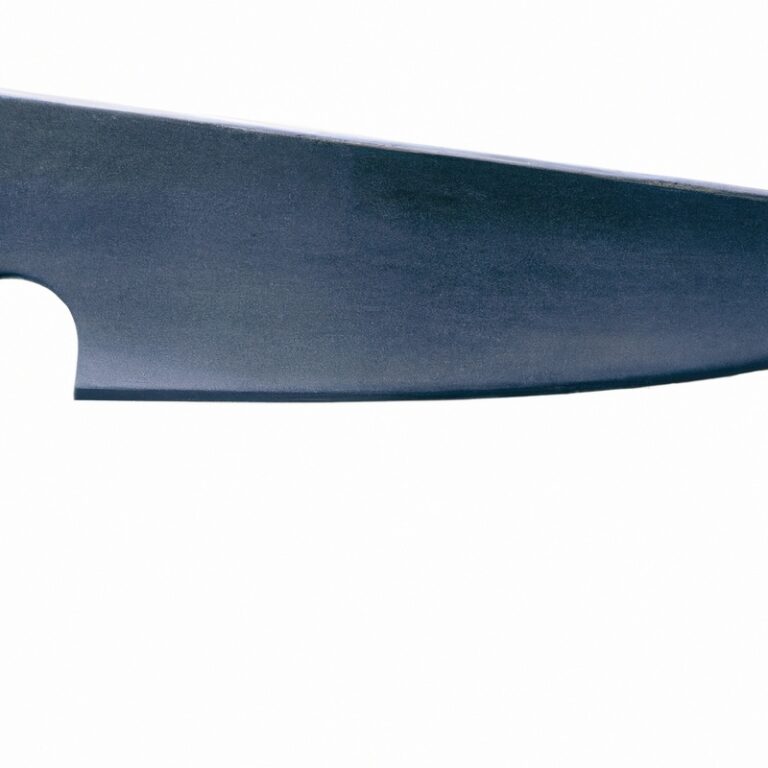What Are The Different Types Of Serrated Knives Available In The Market?
Key Takeaways:
- Serrated knives vary in terms of blade design and serration pattern.
- The most common types of serrated knives include bread knives, steak knives, and utility knives.
- Serrated knives are designed for specific tasks like slicing bread or cutting through tough food items.
- The choice of serrated knife ultimately depends on personal preferences and the specific cutting needs of the user.
Are you tired of struggling with kitchen tasks that require precision slicing? Well, serrated knives might just be your trusty solution.
Whether you’re cutting into a warm loaf of bread, a ripe tomato, or a tender steak, a good serrated knife can make all the difference.
But with so many types of serrated knives available in the market, how do you know which one to choose? In this blog article, I’ll walk you through the different types of serrated knives and their unique features.
Plus, I’ll share some tips on selecting the right one, and how to care for and maintain your serrated knives.
Get ready to slice and dice like a pro!
| Type | Description |
| 1. Bread Knife | A long, **serrated knife** with a **narrow** blade specifically designed for slicing **bread or pastries** without crushing them. |
| 2. Tomato Knife | A small knife with a **serrated** edge that allows for **easy slicing** of **tomatoes and other delicate fruits and vegetables**. |
| 3. Steak Knife | A knife with a **serrated blade**, typically used for **cutting meat** at the table. |
| 4. Utility Knife | A versatile knife with a **serrated edge** that is **smaller** than a chef’s knife, used for **general tasks** such as slicing sandwiches or small fruits and vegetables. |
| 5. Fillet Knife | A long, **flexible knife** with a **serrated edge**, ideal for **filleting fish** or removing the skin from fish. |
Types of serrated knives
Bread knives
Bread knives are a must-have tool for any kitchen. These knives are specifically designed with a serrated edge that allows you to easily slice through bread without crushing it.
The serrations grip the crust, making it easier to create clean, precise cuts.
When choosing a bread knife, look for one with a long blade (between 8 and 10 inches) to accommodate different loaf sizes. The blade should also be thick enough to provide stability while cutting through crusty bread.
A comfortable handle with a good grip is essential for control and safety.
Tomato knives
Tomato knives are specially designed knives that are perfect for slicing through the soft and delicate skin of tomatoes without squishing or tearing them. These knives typically have a serrated blade that allows for a clean and precise cut.
The serrations help grip the tomato’s skin, making it easier to cut through smoothly.
Tomato knives usually have a thin and narrow blade that allows for maximum control while cutting. The blade is usually around 5 to 6 inches in length, which is ideal for maneuvering around the curved shape of a tomato.
The sharp point of the knife makes it easy to pierce the tomato’s skin effortlessly.
Some tomato knives also come with a forked tip, which can be useful for picking up and serving sliced tomatoes. This feature makes the knife versatile and handy in the kitchen.
When choosing a tomato knife, it’s important to consider the quality of the blade and the comfort of the handle.
Look for a knife made from high-quality stainless steel or carbon steel, as these materials offer durability and long-lasting sharpness. A comfortable grip handle will ensure that you have full control and reduce the risk of accidents.
Overall, a tomato knife is a must-have tool for any kitchen.
Its specialized design and serrated blade make slicing tomatoes a breeze and help maintain the integrity of the fruit while preparing salads, sandwiches, or other dishes.
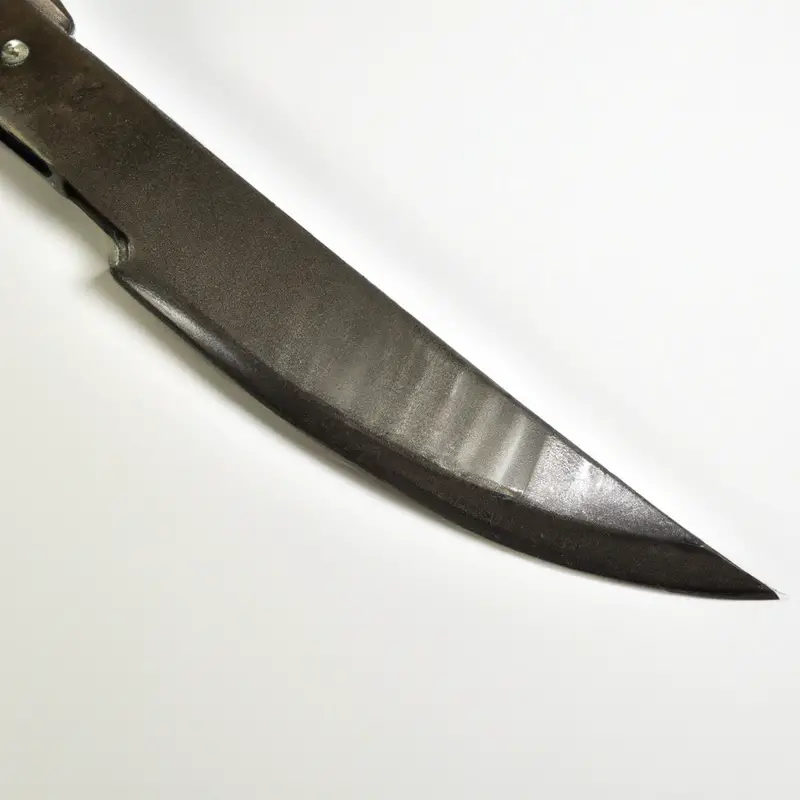
Steak knives
Steak knives are a specific type of serrated knife designed for cutting through cooked meat, particularly steak. They have a sharp and finely serrated edge that easily slices through the fibers of the meat without tearing or crushing it.
The serrations allow for clean cuts and prevent the knife from slipping on the smooth surface of the steak.
It’s important to choose a steak knife with a comfortable handle and a blade that is long enough to handle different steak sizes. Taking proper care of your steak knives, such as handwashing and storing them properly, will help maintain their performance and longevity.
Utility knives
Utility knives are versatile tools that can handle a variety of tasks in the kitchen. With a narrow, sharp blade, they are perfect for precise cutting and slicing.
The serrated edge of a utility knife is designed to grip and cut through tough materials like bread, fruits, and vegetables with ease.
It can also be used for trimming fat off meat or even opening packages. The compact size and lightweight design make it a handy tool for everyday use.
Utility knives are a must-have for any kitchen, providing convenience and efficiency in meal preparation.
Features of serrated knives
Serrated blade
A serrated blade is a key feature of serrated knives. It is characterized by small, jagged teeth along the cutting edge of the blade.
These teeth allow for easy slicing through tough and crusty surfaces without squishing or tearing the food.
The serrations create points of contact, giving the blade better grip and control while cutting. Serrated blades are commonly found in bread knives, tomato knives, steak knives, and utility knives.
They are essential for tasks that require precise and effortless cutting through hard or slippery surfaces.
Handle design
The handle design of a serrated knife is an important factor to consider. A comfortable and ergonomic handle allows for a secure grip and reduces strain during use.
Look for handles made from durable materials, such as stainless steel or high-quality plastic, that are resistant to moisture and offer a non-slip grip.
Some handles also feature finger guards or textured patterns for added safety and control. Ultimately, choose a handle design that feels comfortable in your hand and suits your personal preferences.
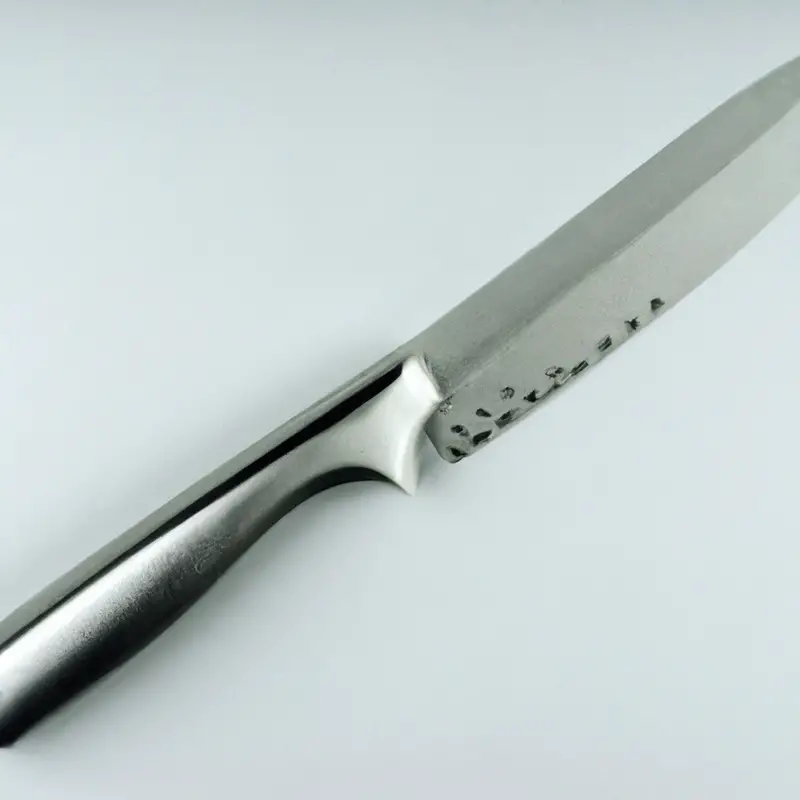
Blade length and thickness
Blade length and thickness play a significant role in the performance of a serrated knife. When it comes to blade length, you’ll find a range of options to choose from, including shorter blades for small tasks and longer blades for larger cuts.
The length primarily depends on your personal preference and the specific tasks you’ll be using the knife for.
As for blade thickness, a thicker blade generally provides more durability and stability, making it suitable for tougher cutting tasks. Thinner blades, on the other hand, excel at precision slicing and tend to create less drag during use.
It’s important to consider the balance between thickness and flexibility based on the type of food you will be cutting.
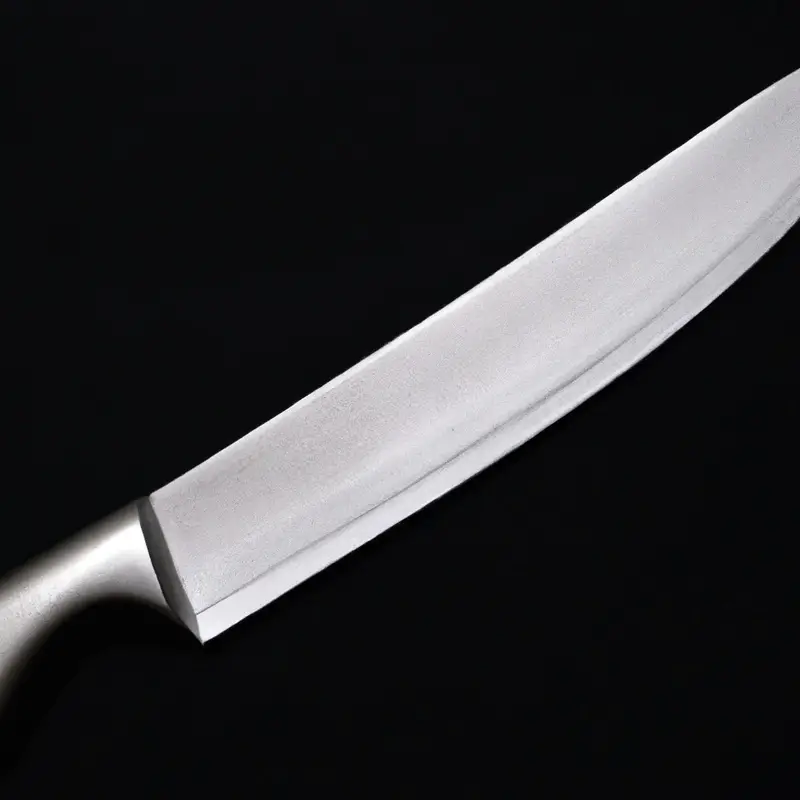
Material and construction
When it comes to the material and construction of serrated knives, there are a few key factors to consider. Firstly, the blade material should be sturdy and durable, such as stainless steel.
This ensures that the knife will remain sharp and resist corrosion over time.
Additionally, a well-constructed serrated blade will feature evenly spaced and uniform teeth, allowing for smooth and effortless cutting. The handle should be comfortable to grip and made from a high-quality material that offers both durability and stability.
When choosing a serrated knife, paying attention to the material and construction will ensure a long-lasting and efficient tool in your kitchen.
Choosing the right serrated knife
Consideration of specific tasks
When choosing a serrated knife, it’s important to consider the specific tasks you’ll be using it for. For slicing bread or pastries, a bread knife with a longer blade and deeper serrations is ideal.
A tomato knife with a narrow blade and fine serrations is perfect for slicing through delicate fruits and vegetables without crushing them.
If you frequently enjoy steaks or other meats, a serrated steak knife will make clean and precise cuts. For a versatile option, a utility knife with a shorter blade can handle a variety of tasks.
Considering your specific needs will help you find the right serrated knife for you.
Budget and price range
When it comes to choosing a serrated knife, considering your budget and price range is important. Prices for serrated knives can vary depending on the brand, materials used, and overall quality.
You can find budget-friendly options starting from around $10, while higher-end serrated knives can range from $50 to $200 or more.
It’s important to find a balance between your budget and the quality of the knife. Keep in mind that investing in a higher-quality serrated knife can often lead to better performance and durability in the long run.
Brand and reputation
When it comes to choosing a serrated knife, considering the brand and reputation is important. You want to invest in a brand that is known for producing high-quality knives that are durable and reliable.
Look for brands that have been in the market for a long time and have a positive reputation among chefs and home cooks alike.
Good brands often prioritize craftsmanship and use high-quality materials in their knives, ensuring that you get a product that will last. Some reputable brands for serrated knives include Wusthof, Victorinox, and Shun.
Handle comfort and grip
When choosing a serrated knife, handle comfort and grip are essential factors to consider. The handle should feel comfortable in your hand and provide a secure grip, especially when dealing with tough or slippery foods.
Look for handles that have ergonomic designs and are made from materials that offer good grip, like rubber or textured plastic.
Additionally, consider the size and shape of the handle, as it should fit well in your hand for optimal control. Don’t overlook the importance of handle comfort and grip when selecting a serrated knife.
Care and maintenance of serrated knives
Proper storage
Proper storage is essential for maintaining the longevity and sharpness of your serrated knives. Here are some tips to ensure they stay in top condition:
- Store your serrated knives separately from other utensils to prevent accidental damage or dulling of the blade.
- Consider using a knife block or a magnetic knife strip to keep your knives safely and securely stored.
- If using a knife block, make sure the slots are wide enough to accommodate the width of the serrated blade without squeezing or bending it.
- Avoid storing serrated knives in a drawer with other utensils, as they can rub against each other, leading to potential damage or blunting of the blade.
- If you need to store your knives in a drawer, use a knife guard or blade cover to protect the blade and prevent accidents.
- Always ensure that your serrated knives are clean and completely dry before storing them to avoid moisture-related issues like rusting.
- Handle your knives with care when placing them in storage to prevent accidental injuries or damage to the blade.
Handwashing vs. dishwasher
When it comes to cleaning serrated knives, handwashing is generally the recommended method. The sharp edges of the serrations can easily become dull or damaged in a dishwasher.
Washing by hand allows for more control and prevents the knives from knocking against other utensils or dishes.
To clean a serrated knife, simply use warm soapy water and a sponge or dishcloth. Pay special attention to the serrated edges, using a soft brush if needed.
Rinse thoroughly and dry immediately to prevent any potential rusting.
Sharpening and honing
Sharpening and honing are important for maintaining the sharpness of your serrated knives. To sharpen a serrated knife, you’ll need a sharpening rod with a similar diameter to the serrations.
Place the rod in the serration and gently move it back and forth.
Honing, on the other hand, helps to maintain the knife’s edge. You can use a honing rod to straighten and realign the blade.
Regularly sharpening and honing your serrated knives will ensure they stay sharp and effective for longer.
Final Verdict
The market offers a variety of serrated knives to suit different purposes. Bread knives are ideal for precise slicing of bread without crushing it.
Tomato knives have narrow serrations for delicate cutting of tomatoes and other soft fruits.
Steak knives are designed for effortlessly cutting through meat. Utility knives are versatile and can handle various tasks in the kitchen.
When choosing a serrated knife, consider the specific tasks you will be using it for, your budget, brand reputation, and handle comfort.
Proper care and maintenance, including proper storage, handwashing, and occasional sharpening, are essential to keep your serrated knife in top condition. Remember, a well-chosen and well-cared-for serrated knife is a reliable kitchen tool that will make your cutting tasks easier and more efficient.

